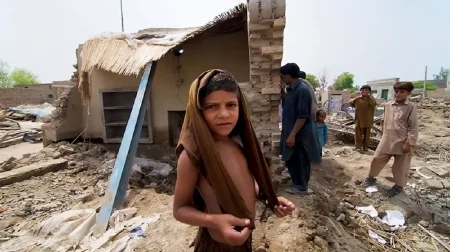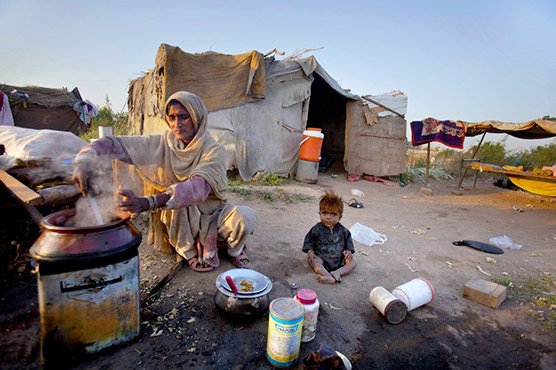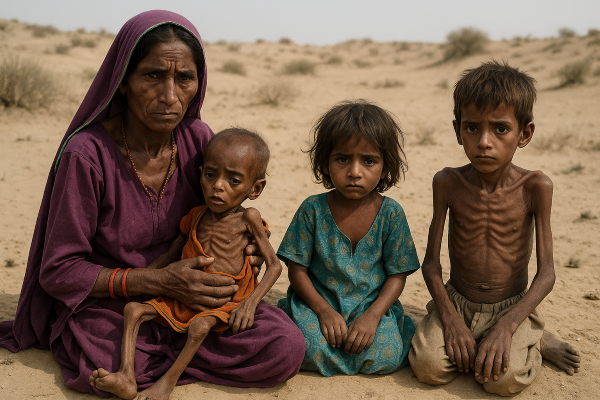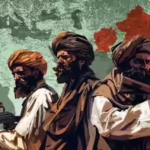The recent report by the Pakistan Population Council has once again laid bare the painful truth about inequality and poor governance in Pakistan. According to the findings, 17 of Pakistan’s 20 most underdeveloped districts are in Balochistan, two are in Khyber Pakhtunkhwa, and one in Sindh. The data is alarming, showing that Balochistan and Sindh lead in unemployment and unpaid labor, proving how decades of neglect and corruption have robbed millions of Pakistanis of their basic rights.
- Balochistan: Rich in Resources, Poor in Life
- Health and Education: Pakistan’s Forgotten Promise
- Life in the Margins: A Daily Struggle
- Unemployment and Economic Neglect
- Tharparkar: A Humanitarian Crisis Hidden in Plain Sight
- Poor Governance: The Root of All Deprivation
- The Call for Real Reform
- 1. Strengthen Local Governance:
- 2. End Political Interference in Institutions:
- 3. Transparent Use of Development Funds:
- 4. Invest in Human Capital:
- 5. Strengthen Accountability Mechanisms:
- 6. Promote Public Participation:
- 7. Enforce Fiscal Discipline and Policy Continuity:
- The author, Anum Malik, is affiliated with the State News Agency and voluntarily contributes her research to the think tank, CDS.
- *The views and opinions expressed herein, and any references, are those of the author and do not necessarily reflect the editorial policy of the Centre for Development and Stability (CDS).
Balochistan: Rich in Resources, Poor in Life

Balochistan, the land that fuels Pakistan’s industries through its natural gas, coal, and minerals that continues to suffer the deepest poverty and deprivation. Districts like Washuk, Khuzdar, Kohlu, and Zhob are among the most underdeveloped in the country, while Kohistan in Khyber Pakhtunkhwa faces similar hardships. Despite its immense potential, Balochistan’s poverty exposes a long history of state neglect and failed governance.
The tragedy of Balochistan is not its lack of resources but the absence of sincere political will. For decades, the province has been deprived of fair development projects. Roads remain unpaved, schools are without teachers, and hospitals function without doctors. The people who live above Pakistan’s wealthiest lands continue to live without electricity, clean water, or economic security. This is the real face of poor governance in Pakistan, where the richest land feeds everyone but its own people.
Health and Education: Pakistan’s Forgotten Promise
The report highlights an alarming truth, access to healthcare facilities is most limited in Balochistan and Khyber Pakhtunkhwa. In some areas, people travel more than 30 kilometers just to reach the nearest health center. Lack of doctors, medicines, and emergency infrastructure means that thousands of preventable deaths occur every year.
The education crisis in Pakistan is equally serious. Karachi boasts the highest number of schools, while Balochistan has the fewest. For girls, the situation is heartbreaking. In many Baloch districts, the nearest high or higher secondary school for girls is miles away. This denies an entire generation of girls their right to education, leaving them trapped in poverty. Without education, there can be no progress, yet the state continues to ignore this basic pillar of development.
Life in the Margins: A Daily Struggle

According to the report, 65% of households in these districts are made of mud or temporary structures, while in Jhal Magsi, that number climbs to 97%. Families live in fragile homes with little access to clean drinking water, sanitation, or electricity. Poor infrastructure cuts them off from the rest of the country.
Lack of roads, transport, and communication services makes it nearly impossible to connect with markets, schools, or hospitals. In times of crisis, floods, medical emergencies, or natural disasters that help rarely arrives on time. These people live in the margins, ignored and unheard, surviving on resilience while the state looks the other way.
Unemployment and Economic Neglect
In terms of employment, 15 out of the 20 worst-performing districts are from Balochistan, followed by parts of Khyber Pakhtunkhwa and Sindh. The report notes that unemployment in Sindh and unpaid labor in Balochistan are among the highest in the country. Most women work in agriculture or domestic labor without pay.
The economic failure is not accidental, it is the direct result of corruption, mismanagement, and lack of local empowerment. Development funds are often lost in bureaucracy or misused by officials. Industrial projects are rare, and small businesses lack the support to grow. When governance fails, poverty thrives, and these districts stand as painful proof of that.
Tharparkar: A Humanitarian Crisis Hidden in Plain Sight

Sindh’s Tharparkar district represents another face of Pakistan’s inequality. Declared as the most demographically vulnerable district, Tharparkar continues to suffer from high birth rates, malnutrition, and lack of clean water.
Child mortality remains alarmingly high, and families struggle for survival in harsh desert conditions. Despite repeated promises, unemployment in Sindh’s rural areas and lack of education continue to push its people deeper into poverty.
Tharparkar’s crisis is not new, it is a decades-old story of failed planning and weak governance. While urban centers of Sindh enjoy rapid development, rural communities like Tharparkar are left to fight hunger and disease on their own.
Poor Governance: The Root of All Deprivation
Behind every figure of poverty, every mud house, and every underdeveloped district lies the same disease, and poor governance prevails in Pakistan. Successive governments, both federal and provincial, have failed to deliver on their promises. Corruption eats away at development funds, while political instability keeps long-term projects incomplete.
Instead of strengthening local governments and empowering communities, decisions continue to be made in distant offices, far removed from the reality of places like Dera Bugti, Awaran, and Kohlu. The people of these regions feel disconnected from the state, and this alienation grows with every broken promise.
The Call for Real Reform

To cure the chronic disease of poor governance, Pakistan must go beyond surface-level measures and implement deep structural reforms:
1. Strengthen Local Governance:
Empower local governments with financial autonomy and decision-making authority. Development decisions should be made by those who live among the people, not by bureaucrats in Islamabad or provincial capitals.
2. End Political Interference in Institutions:
Administrative positions, from deputy commissioners to education and health officers, must be filled on merit, not through political connections. Civil service reforms are crucial to rebuild professionalism and accountability.
3. Transparent Use of Development Funds:
Introduce digital monitoring of all development projects with public access to data. Every rupee spent on roads, schools, or hospitals should be traceable. Corruption thrives in darkness, transparency is the light that ends it.
4. Invest in Human Capital:
Real development is not about infrastructure alone; it is about people. Prioritize education, healthcare, and skills training in the poorest districts. A literate and healthy population is the backbone of good governance.
5. Strengthen Accountability Mechanisms:
Make the National Accountability Bureau (NAB), provincial anti-corruption bodies, and ombudsman offices truly independent. Accountability must be consistent, across all political parties, bureaucrats, and institutions.
6. Promote Public Participation:
Encourage community-based monitoring committees, citizen feedback portals, and social audits. When people become part of governance, corruption and negligence lose their shield of secrecy.
7. Enforce Fiscal Discipline and Policy Continuity:
Successive governments must stop discarding previous policies for political gain. National and provincial development plans should have continuity and be insulated from political change.
To conclude, Pakistan’s underdevelopment is not the failure of resources, it is the failure of resolve. The path to prosperity begins with integrity in governance. Real reform demands courage, not convenience; action, not promises. Only when Pakistan dares to reform from within will the cycle of poverty and neglect finally be broken.



